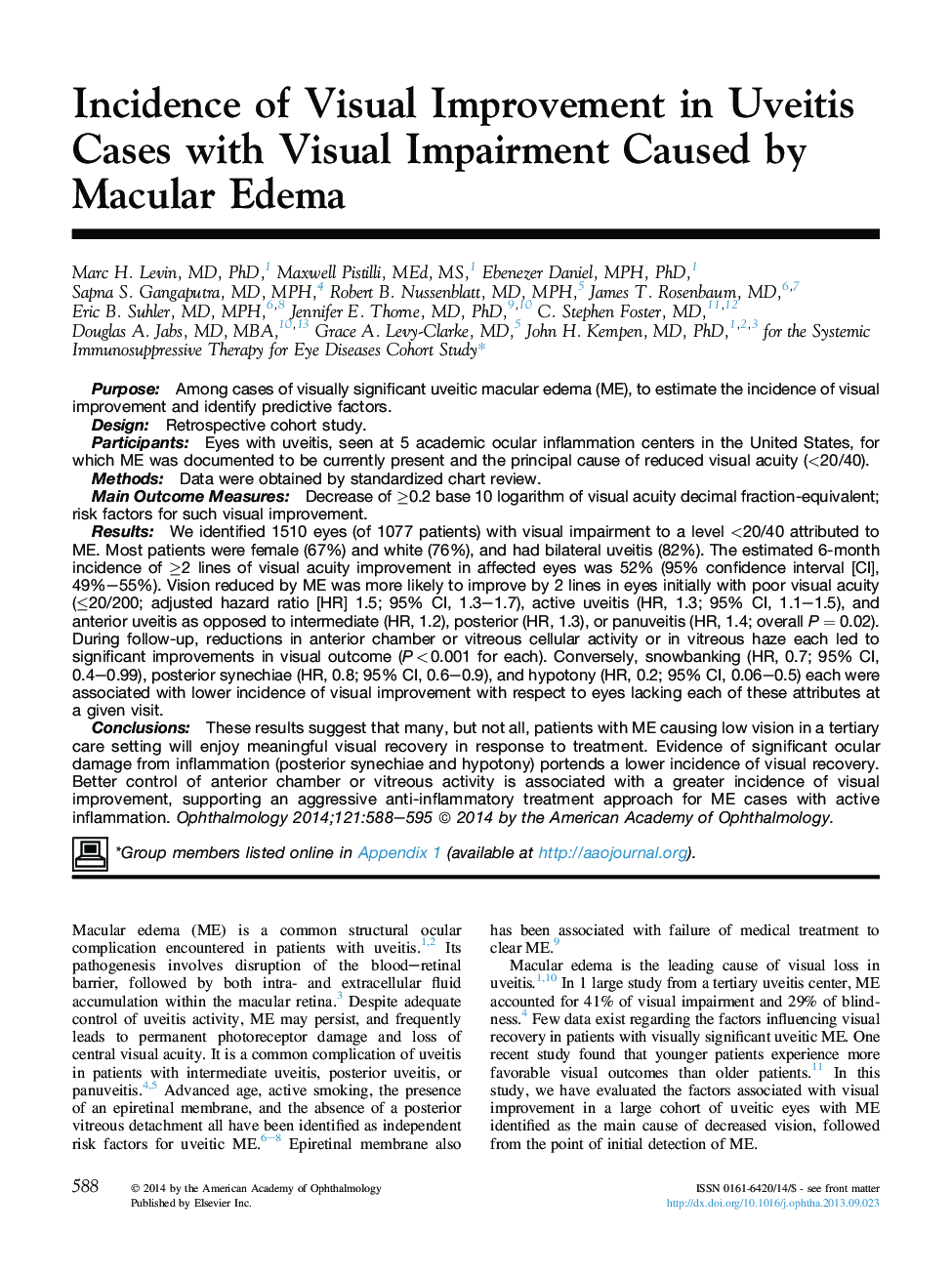| Article ID | Journal | Published Year | Pages | File Type |
|---|---|---|---|---|
| 6201121 | Ophthalmology | 2014 | 9 Pages |
Abstract
These results suggest that many, but not all, patients with ME causing low vision in a tertiary care setting will enjoy meaningful visual recovery in response to treatment. Evidence of significant ocular damage from inflammation (posterior synechiae and hypotony) portends a lower incidence of visual recovery. Better control of anterior chamber or vitreous activity is associated with a greater incidence of visual improvement, supporting an aggressive anti-inflammatory treatment approach for ME cases with active inflammation.
Related Topics
Health Sciences
Medicine and Dentistry
Ophthalmology
Authors
Marc H. MD, PhD, Maxwell MEd, MS, Ebenezer MPH, PhD, Sapna S. MD, MPH, Robert B. MD, MPH, James T. MD, Eric B. MD, MPH, Jennifer E. MD, PhD, C. Stephen MD, Douglas A. MD, MBA, Grace A. MD, John H. MD, PhD,
